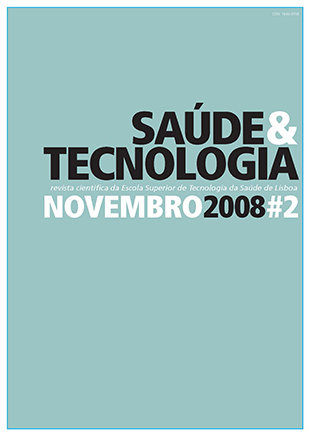Parental determinants of compliance with occlusion therapy for ambliopic children
DOI:
https://doi.org/10.25758/set.84Keywords:
Compliance, Occlusive therapy, Perceived efficacy, Behavior intention, Amblyopia, ChildAbstract
Aims - Recent investigation studies apply to the fact that in spite of occlusive therapy about 1/3 of the amblyopic eyes don’t reach the visual acuity of 5/10. One of the reasons is the non-compliance with the treatment. The aim of this study is to evaluate the influence of psychosocial factors in the parental compliance of occlusive therapy in children with amblyopia and to determine the existence of significant differences between the Orthoptist’s recommendations, parental perception of these recommendations, and behaviour. Methods - To achieve the objective a Quantitative transversal study was delivered. Parents of amblyopic children (n=100) receiving occlusion therapy in a public hospital and a private clinic in Lisbon, participated in this study. Parents were asked to complete a questionnaire based on Roger’s Protection Motivation theory, also known as PMT. The parental variables analysed were severity, vulnerability, self-efficacy, behaviour intentions, perceived efficacy, and treatment barriers. Additionally, other variables were analysed such as parental perception of the occlusion prescription and parental behaviour. Results - The results show that 72% of the parents were complying with Orthoptist recommendations to patch their child against a percentage of 28% that didn’t comply. Perceived efficacy (p=0,011) and behaviour intention (p=0,015) were positively associated with compliance with therapy (!= 0,05). There is a positive mild correlation (kappa=0,536) between the Orthoptist’s recommendations and parental perception of these recommendations. There is a strong correlation (kappa=0,700) between the perception of hours of occlusion and the behaviour. Conclusions - It can be concluded that the perception of the benefits of recommended therapy provoked a coping response and the parental behaviour intention to comply with occlusive therapy. This means that the positive intention to go ahead with the treatment and the perceived efficacy in enhancing visual acuity may predict parental compliance. The compliance will be better if the parental perception of the adopted behaviour is associated with the better rehabilitation of their child, which was demonstrated in the current investigation.
Downloads
References
Searle A, Norman P, Harrad R, Vedhara K. Psychosocial and clinical determinants of compliance with occlusion therapy for amblyopic children. Eye. 2002 Mar;16(2):150–5.
Direcção-Geral da Saúde. Plano nacional de saúde 2004/2010. Vol. 2: orientações estratégicas. Lisboa: DGS; 2004.
Von Noorden GK, Campos EC. Binocular vision and ocular motility: theory and management of strabismus. 5th ed. St. Louis, MI: Mosby; 1996.
Loudon SE. Improvement of therapy for amblyopia [thesis]. Rotterdam: Erasmus University Medical Center; 2007.
Loudon SE, Chaker L, Vos S, Fronius M, Passchier J, Harrad R, et al. Effect of an educational programme on attitudes and behaviour occlusion therapy and reasons for total non-compliance. Rotterdam: Erasmus University Medical Center; 2007.
Loudon SE, Polling JR, Simonsz HJ. A preliminary report about the relation between visual acuity increase and compliance in patching therapy for amblyopia. Strabismus. 2002 Jun;10(2):79–82.
Dorey SE, Adams GG, Lee JP, Sloper JJ. Intensive occlusion therapy for amblyopia. Br J Ophthalmol. 2001 Mar;85(3):310–3.
Rogers RW. A protection motivation theory of fear appeals and attitude change. J Psychol. 1975;91:93–114.
Keller PA. Regulatory focus and efficacy of health messages. J Consum Res. 2006;33(1):109–14.
Epstein LH, Koeske R, Wing RR, Valoski A. The effect of family variables on child weight change. Health Psychol. 1986;5(1):1–11.
Heiby EM, Carlson JG. The health compliance model. J Compliance Health Care. 1986 Fall;1(2):135–52.
Downloads
Published
Issue
Section
License
Copyright (c) 2023 Saúde e Tecnologia

This work is licensed under a Creative Commons Attribution-NonCommercial-NoDerivatives 4.0 International License.
The journal Saúde & Tecnologia offers immediate free access to its content, following the principle that making scientific knowledge available to the public free of charge provides greater worldwide democratization of knowledge.
The journal Saúde & Tecnologia does not charge authors any submission or article processing charges (APC).
All content is licensed under a Creative Commons CC-BY-NC-ND license. Authors have the right to: reproduce their work in physical or digital form for personal, professional, or teaching use, but not for commercial use (including the sale of the right to access the article); deposit on their website, that of their institution or in a repository an exact copy in electronic format of the article published by Saúde & Tecnologia, provided that reference is made to its publication in Saúde & Tecnologia and its content (including symbols identifying the journal) is not altered; publish in a book of which they are authors or editors the total or partial content of the manuscript, provided that reference is made to its publication in Saúde & Tecnologia.







